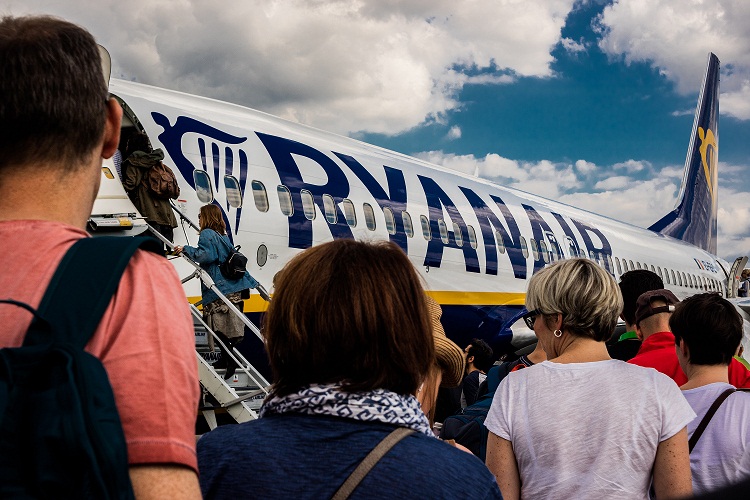The promise of a smart city seduces with the image of connected, agile, almost alive cities, capable of anticipating the needs of their inhabitants and enhancing their well-being with the precision of an algorithm. However, in this mirage of progress lies an uncomfortable question: how much security are we willing to sacrifice for the promise of a more comfortable and efficient life?
Smart cities promise new forms of urban coexistence. Sensors, cameras and applications coexist in a digital framework that regulates traffic, monitors air quality and optimizes public services, from garbage collection to water management. However, that same invisible network that connects everything also exposes the city and its citizens to unprecedented and, until recently, unimaginable risks.
The Transparent City: From Modern Utopia to Digital Vulnerability
By: Gabriel E Levy B
When Anthony M. Townsend published “Smart Cities: Big Data, Civic Hackers, and the Quest for a New Utopia” in 2013, he introduced the idea that urban connectivity could be the key to solving some of cities’ oldest problems: congestion, pollution, insecurity, and inequality.
Townsend argued that the integration of smart technologies would revolutionize urban management, and with it, the quality of life of inhabitants.
This utopian vision was echoed in initiatives such as the “Smart City Index” developed by the IMD World Competitiveness Centre and the Singapore University of Technology and Design, where the cities that made the most progress in connectivity were also among those that reported the best levels of citizen satisfaction.
However, recent history shows that, as cities become more transparent and connected, new forms of fragility emerge.
Cybersecurity, a relegated concern in the early years of urban digitalization, began to take center stage after episodes such as the cyberattack on the city of Atlanta in 2018, which paralyzed public services and exposed cracks in digital infrastructure.
Hyperconnectivity as a double-edged edge: At what cost do we access convenience?
Urban planner Carlo Ratti, director of MIT’s Senseable City Lab, argues that the intelligence of a city depends not only on the amount of technology installed, but on the way in which citizens interact with it. “The smart city is not an automated city, but a city where collective intelligence is enhanced by connectivity,” he says.
However, hyperconnectivity implies that personal data, mobility patterns and even consumption preferences are recorded, processed and, sometimes, exposed.
The consulting firm Gartner projected that by 2025 there will be more than 26 billion IoT (Internet of Things) devices connected in cities, all generating data and providing services.
This reality, which promises a previously unthinkable quality of life, also opens doors to vulnerability: ransomware attacks, information theft, manipulation of critical infrastructure, and mass surveillance. A study by the Inter-American Development Bank and the Organization of American States, published in 2021, indicates that 65% of Latin American cities implemented smart city technologies without a comprehensive cybersecurity plan, leaving them exposed to risks that escalate with digitalization itself.
In this context, the quality of life rises, but so do the threats.
What is presented as a “safer” city in terms of surveillance and monitoring, can lead to scenarios of extreme vulnerability when a computer attack interrupts the electricity supply, blocks access to hospitals or manipulates traffic systems. Connectivity not only optimizes, it also amplifies risks.
Real risks: stories of cities under attack
The city of Baltimore, in 2019, was paralyzed for weeks by a ransomware attack that blocked most digital public services, from paying taxes to managing building permits.
The attackers demanded a ransom in bitcoins, and the city, unable to operate, ended up investing more than $18 million between recovery and prevention measures.
A similar episode occurred in Johannesburg, South Africa, where hackers infiltrated the electricity system and forced the municipal company to suspend service in several areas, generating chaos and mistrust.
The experience of Singapore, recognized as one of the smartest and safest cities in the world, shows that even the most robust systems are not invulnerable.
In 2018, a cyberattack compromised the medical data of 1.5 million people, including the Prime Minister himself.
The incident sparked a national debate about the balance between digitalization and security, and prompted the government to strengthen the protection of its critical infrastructure.
In Latin America, the case of Mexico City illustrates the paradox of connectivity.
The massive installation of cameras, sensors and public Wi-Fi networks made it possible to optimize mobility and emergency response, but it also led to personal data leaks, which fueled the black market for information and gave rise to new types of extortion.
As Evgeny Morozov warns in “To Save Everything, Click Here”, digitalization, far from eliminating risks, transforms them and displaces them to new areas that are less visible, but no less dangerous.
In conclusion
Smart cities promise to raise the quality of life and multiply the opportunities of their inhabitants, but that same connectivity that seduces and fascinates, also exposes the city to unprecedented and costly risks.
Security in the age of the smart city is not only a technical problem, but also an ethical, political and social one, which forces us to rethink the way we manage and protect what unites us: information.
References:
- Townsend, A. M. (2013). Smart Cities: Big Data, Civic Hackers, and the Quest for a New Utopia.
- Ratti, C., Senseable City Lab, MIT.
- Inter-American Development Bank & OAS (2021), Cybersecurity: Risks, Progress and the Way Forward in Latin America and the Caribbean.
- Morozov, E. (2013). To Save Everything, Click Here.
- Gartner (2020). Forecast: Internet of Things — Endpoints and Associated Services, Worldwide, 2020.



